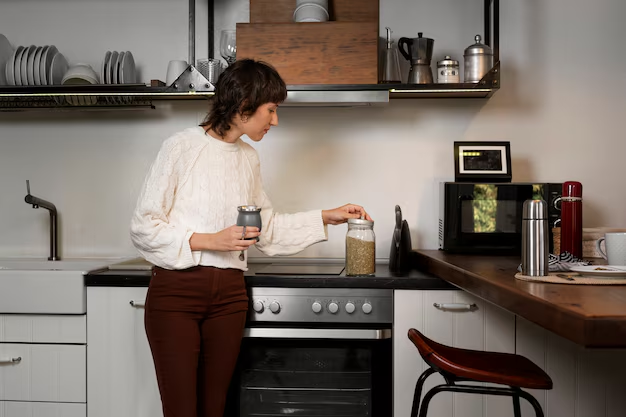How Long Do Leftovers Really Last in the Fridge? A Practical Guide for Every Household
Leftovers are a staple in households worldwide, offering convenience and a way to reduce food waste. However, a question lingers in many minds: "How long can leftovers be kept in the refrigerator safely?" Understanding proper food storage can not only save you from foodborne illnesses but also help you make the most of your groceries.
🍲 The General Rule of Thumb for Leftover Storage
For most leftovers, a 3 to 4-day window in the fridge is a widely accepted guideline. This duration helps to foster both food safety and quality. Bacteria can grow in food if it’s stored beyond this time, even in the cool environment of a refrigerator. Such bacterial growth may not always be visible to the naked eye, making it critical to adhere to these timeframes.
🕒 Exceptions to the Rule
- Seafood: Best consumed within 1 to 2 days due to rapid spoilage.
- Deli Meats and Hot Dogs: Despite being processed, they should be consumed within a 2-week window if unopened, but post-opening, aim for 3 to 5 days.
- Gravies, Sauces, and Soups: Slightly longer-lasting, generally up to 4 days.
🥗 Factors Impacting Leftover Longevity
While the general rule provides a baseline, several factors influence how long food stays fresh:
1. Initial Cooking Quality
Leftovers that start as well-cooked meals tend to last longer. Ensure meats are cooked to safe internal temperatures, and vegetables are fresh and firm at the time of cooking.
2. Refrigerator Temperature
An optimal fridge temperature is below 40°F (4°C). This is a crucial factor in slowing bacterial growth. Ensure your refrigerator maintains this temperature consistently.
3. Storage Containers
Choose airtight containers to store leftovers. They prevent moisture and bacteria from entering and help retain the food's flavor and texture.
4. Preparation and Handling
Practice safe food handling by washing hands and surfaces frequently. Avoid leaving food out at room temperature for more than two hours to minimize bacterial exposure.
🧊 The Role of Freezing
For those unable to consume leftovers within a few days, freezing is an excellent option. Frozen leftovers can last for months without losing their quality, offering a versatile solution for meal planning.
🌡️ Freezing Tips
- Flash Freeze: Arrange items individually on a baking sheet before transferring them to containers to prevent clumping.
- Label and Date: Always mark containers to keep track of what needs consuming first.
- Defrosting Safely: Thaw in the refrigerator, cold water, or microwave to ensure even, safe thawing.
🧐 Signs That Leftovers Have Gone Bad
Spotting spoiled food saves you from consuming potentially harmful bacteria. Some red flags include:
- Texture Changes: Sliminess or excessive dryness indicates spoilage.
- Off Smells: While some strong smells are normal, like garlic or onions, an unexpected foul odor is a clear warning.
- Mold: Any signs of mold, regardless of color, is a definitive sign to discard the food.
🍽️ Visual Summary: Quick Tips for Safe Leftover Storage
Here’s a useful summary to ensure your leftovers stay safe and enjoyable:
- ⏰ Consume within 3-4 days: General guideline for most items.
- 🌡️ Maintain fridge temp below 40°F: Critical for slowing bacteria.
- ⚠️ Seafood and certain meats: Consider 1-2 days to prevent spoilage.
- 💧 Use airtight containers: Better storage means fresher food.
- 📆 Freeze for long-term storage: Extend life for months.
🧠 Best Practices for Leftover Usage
Implementing effective strategies for using leftovers can also help you maximize their utility and avoid waste:
Meal Planning
Plan meals around your leftovers. Creating a versatile menu ensures all food items are used efficiently. Introducing a "leftovers night" can make meals diverse and exciting.
Repurposing Ingredients
Transform leftovers into new dishes. Turkey can become soup, mashed potatoes turn into pancakes, and roasted veggies serve as the perfect pizza topping.
Community and Sharing
If you've prepared more than you can consume, consider sharing with neighbors or community initiatives. It's a simple way to connect and care for others while reducing food waste.
🌍 Sustainable Practices: More than Just Food Safety
Storing food safely doesn’t just protect your health; it's also beneficial for the environment. By maximizing the use of your leftovers:
- Reduce Food Waste: Conserve resources used in food production.
- Minimize Carbon Footprint: Decrease methane emissions from food waste.
- Support Local Communities: Share excess food with those in need, fostering community bonds.
🤔 Common Myths and Misunderstandings
Several myths persist about leftover storage, leading to confusion:
Only the Nose Knows
Relying solely on smell is inaccurate. Some bacteria do not produce off-odors but can still cause illness.
All Leftovers Last Equally
Not all leftovers are created equal. Ingredients and preparation methods significantly impact longevity.
Refrigeration Stops All Bacteria
While refrigeration slows bacteria, it doesn't eradicate it. Following storage guidelines is still critical.
The Takeaway
Understanding how to manage your leftovers with care is essential for maintaining their quality and your health. By mastering these practical food storage strategies, you can enjoy tasty meals, avoid waste, and foster a healthier and more sustainable lifestyle. Stay informed, and always when in doubt, opt for caution—because when it comes to food safety, it's better to be safe than sorry.
